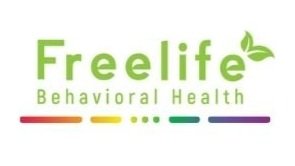Pride Month in America: How Protest Became Celebration
Pride isn’t just confetti and rainbows. It’s a lineage of rebellion, memory, identity—woven together with threads of resistance, visibility, and hope.
At Freelife Behavioral Health, we believe history holds the power to heal. Understanding when and why Pride Month began in America matters—not just as trivia, but as an act of honoring those who risked safety so future generations could live more freely.
So let’s walk through the beginning of Pride—how protest became ritual, pain transformed into pride, and a rebellion in Greenwich Village became the pulse of an entire movement.
The Spark: When Pride Month Began (U.S. Roots)
June 28, 1969. That night, the New York City Police Department raided the Stonewall Inn, a gay bar in Greenwich Village. Such raids were tragically habitual at the time: LGBTQ+ people faced systemic harassment, criminalization, and marginalization. HISTORY+2NBCU Academy+2
But that night was different. Instead of submission, the patrons, neighbors, and onlookers fought back. The raid ignited clashes, protests, and a multi-night standoff—later called the Stonewall Uprising—led in part by trans women of color such as Marsha P. Johnson and Sylvia Rivera. Encyclopedia Britannica+3National LGBTQ Task Force+3The Library of Congress+3
That was the spark.
One year later — June 28, 1970 — activists in New York organized a march to commemorate Stonewall. They named it Christopher Street Liberation Day. Between 3,000 and 5,000 people marched from Greenwich Village to Central Park, demanding visibility, dignity, and rights. National LGBTQ Task Force+4HISTORY+4The Library of Congress+4
At the same time, parallel marches were organized in Los Angeles, Chicago, and San Francisco. Suddenly, Pride wasn’t just a single city’s memory—it was a movement. HISTORY+2National LGBTQ Task Force+2
These early marches were not parades of pure joy—they were protests, acts of defiance, demands for justice. Over time, their tone softened and broadened, but their roots remain political and urgent. Wikipedia+2National LGBTQ Task Force+2
From Protest to Month: Official Recognition
Pride Month as a month-long celebration evolved gradually. Cities across the nation began hosting festivals, marches, and commemorative events during June in recognition of Stonewall. The Library of Congress+2Wikipedia+2
On the federal level, President Bill Clinton officially declared June 1999 as Gay and Lesbian Pride Month, elevating the observance to national status. nceed.morgan.edu+3HISTORY+3Wikipedia+3
Later, under President Barack Obama, Pride Month was expanded in scope and name to more broadly include LGBTQ+ identities. Encyclopedia Britannica+3HISTORY+3Wikipedia+3
Today, June stands annually as LGBTQ+ Pride Month—an entire month dedicated to mourning, memory, activism, community, and joy. The Library of Congress+2Wikipedia+2
Why June? The Power of Anniversary
Choosing June isn’t random. It anchors Pride in memory and resistance. The date of the Stonewall Uprising—June 28—created a natural anniversary to reclaim, commemorate, and reframe. Wikipedia+4HISTORY+4The Library of Congress+4
Over time, what began as a single day of protest became a week, then a full month—allowing more time and space for remembrance, education, celebration, and organizing. geo.loc.gov+3The Library of Congress+3Encyclopedia Britannica+3
Key Figures & Threads Weaving Pride’s Beginnings
While no single founder can claim all credit, certain names and narratives deserve special recognition:
Brenda Howard (“Mother of Pride”) helped organize the first Christopher Street Liberation Day and raised the idea of extending it into a month. nascsp.org+2HISTORY+2
Marsha P. Johnson and Sylvia Rivera, among others, played frontline roles during Stonewall and later in sustaining queer, trans, and homeless youth advocacy. National LGBTQ Task Force+2Wikipedia+2
Craig Schoonmaker, an activist of the 1970 march, is credited with popularizing the term “pride” instead of more militant slogans. National LGBTQ Task Force+2HISTORY+2
The Legacy & Why It Still Matters
Pride today is many things: festival, protest, remembrance, rally, safe space, creative expression. But its core is rooted in resistance. National LGBTQ Task Force+2Wikipedia+2
The history reminds us:
Rights are not free—they are fought for.
Visibility can be radical; joy can be revolutionary.
Queer identities are not marginal—they are integral to the fabric of justice.
Our past is part of our power.
At Freelife Behavioral Health, we believe stories heal. The story of Pride is not distant myth—it’s part of the living legacy in every person who dares to be themselves.
FAQs About the History of Pride Month
When was Pride Month first created?
Pride Month grew out of the Stonewall Uprising of June 1969. The first official Pride Month was recognized nationally in 1999 when President Bill Clinton declared June as Gay and Lesbian Pride Month in the United States.
When was the first Pride march in the U.S.?
The first Pride march took place on June 28, 1970, exactly one year after Stonewall. Known as Christopher Street Liberation Day, it began in New York City and inspired similar marches in Los Angeles and Chicago.
What happened in 1969 for gays?
In 1969, the Stonewall Uprising began after police raided the Stonewall Inn, a popular gay bar in New York City. The LGBTQ+ community fought back, leading to days of protest and resistance that ignited the modern LGBTQ+ rights movement.
Why did they create Pride Month?
Pride Month was created to commemorate the Stonewall Uprising, honor the fight for LGBTQ+ rights, and celebrate love, identity, and community. It serves as both a remembrance of struggle and a celebration of resilience, visibility, and progress.
